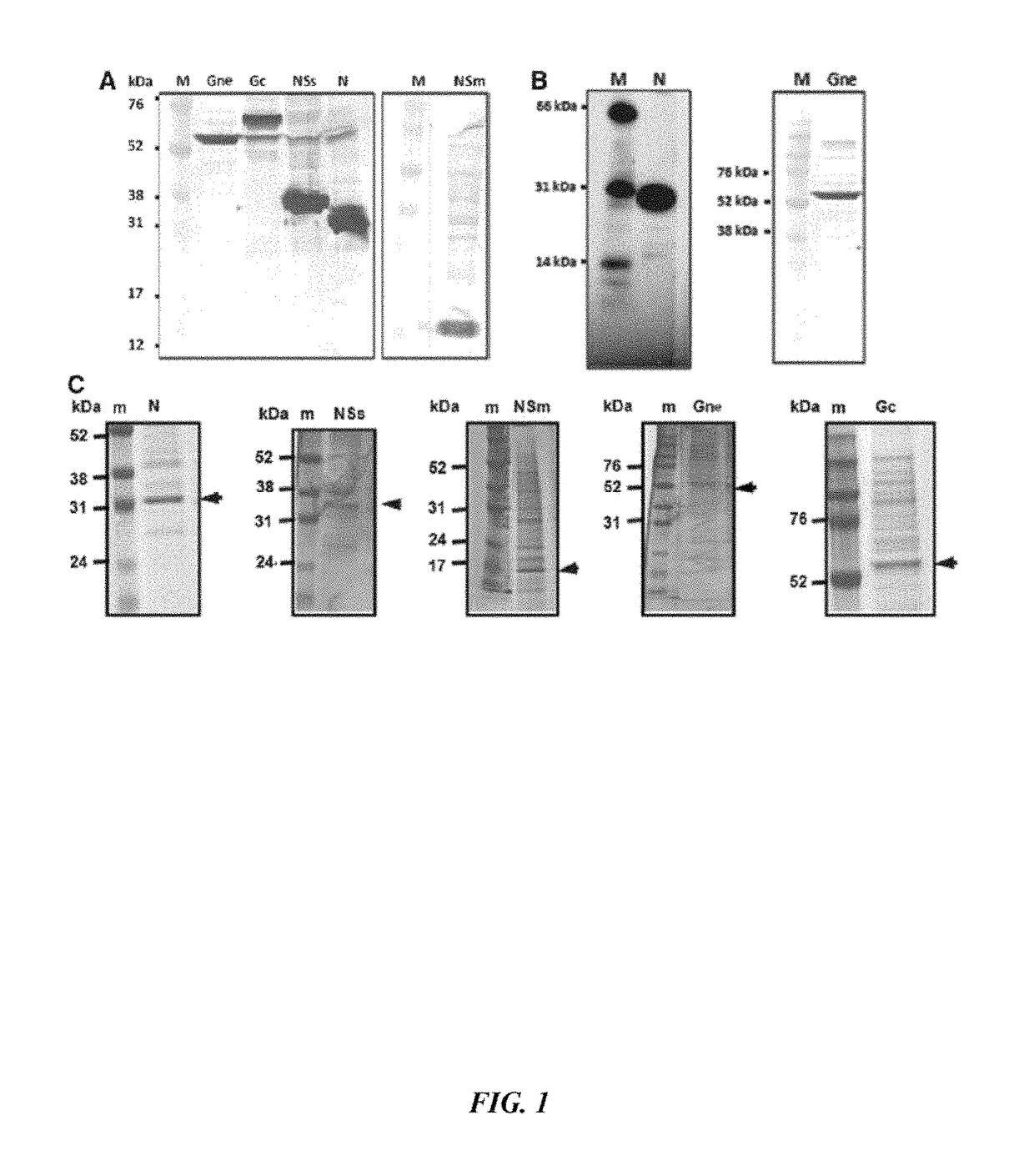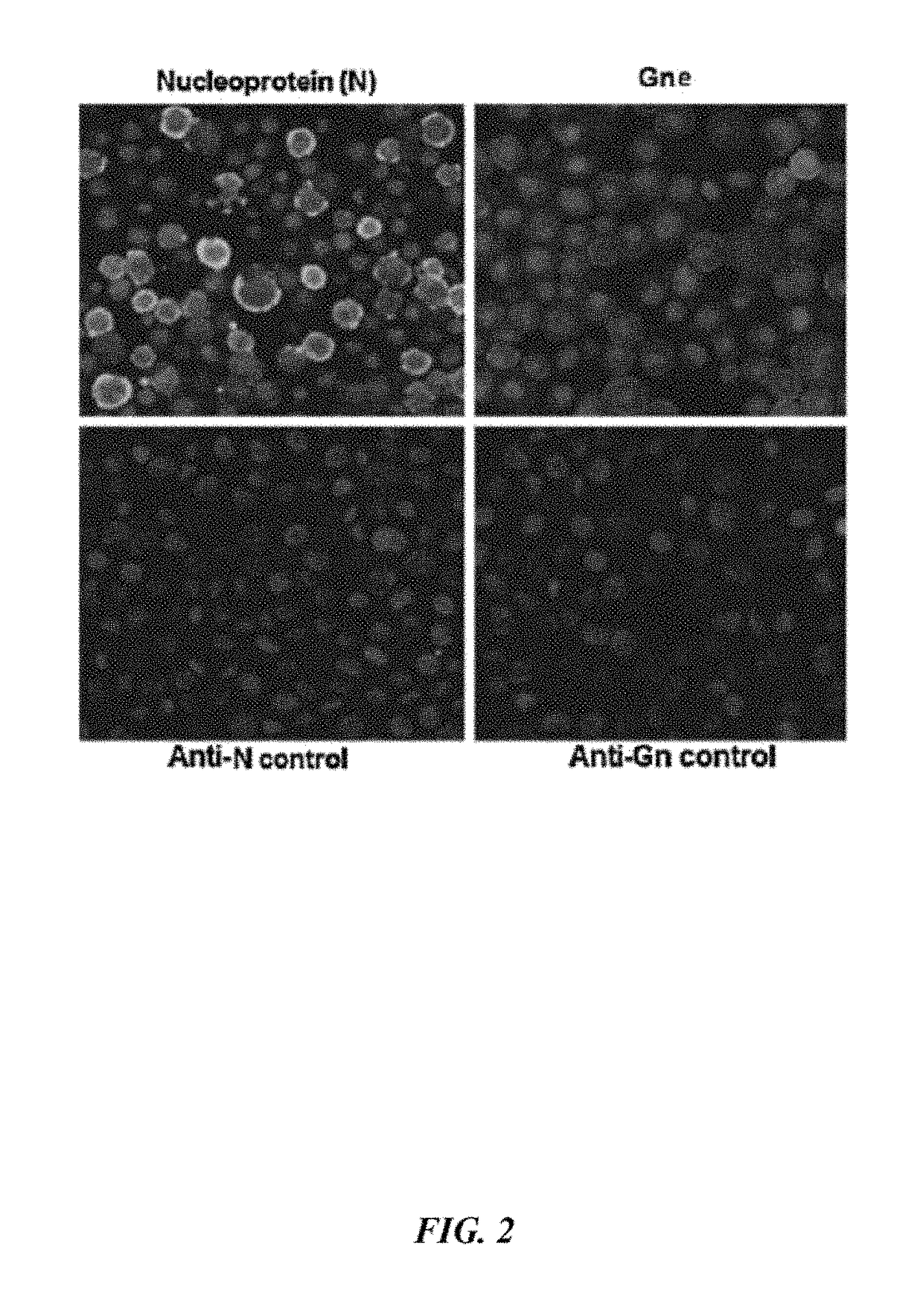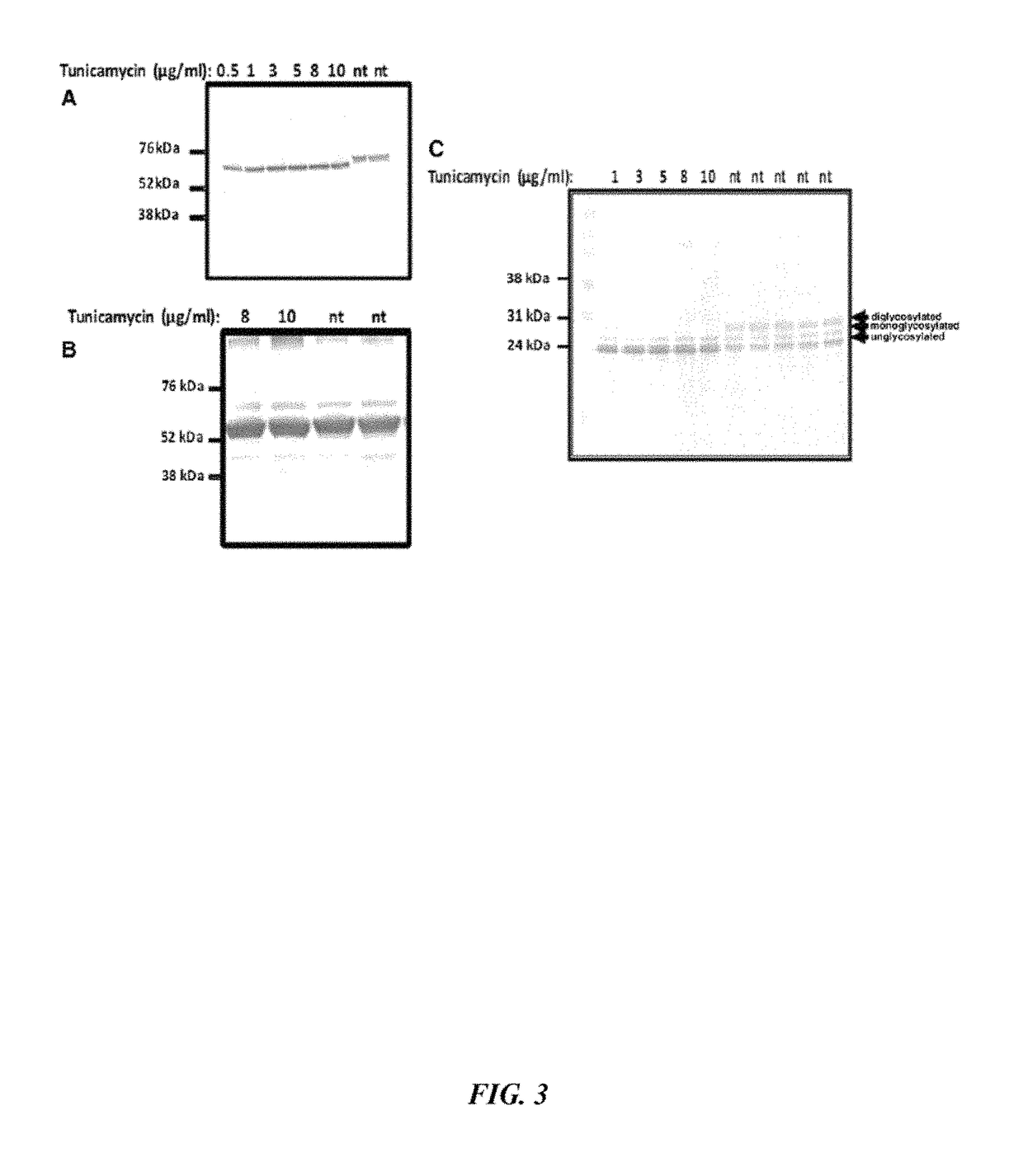Rift Valley Fever Virus glycoproteins, Gn and Gc, and their use
a technology of rift valley fever virus and glycoprotein, applied in the field of immunoreagents, can solve the problems of affecting the reliability of serodiagnosis assays using this protein, no rvfv vaccine fully approved, and the immunogenicity and efficacy of rvfv vaccines
- Summary
- Abstract
- Description
- Claims
- Application Information
AI Technical Summary
Benefits of technology
Problems solved by technology
Method used
Image
Examples
example 1
n of RVFV Recombinant Proteins
[0197]Using recombinant baculovirus, RVFV structural (Gc, Gn and N) and non-structural proteins (NSs and NSm), each containing a hexahistidine tag at their C-terminus were expressed in a eukaryotic expression system using Sf9 cells. To ensure translocation in the ER and glycosylation of the structural glycoproteins, Gn and Gc, a signal peptide was fused upstream of the N-terminus of both proteins. Infection of Sf9 cells with recombinant baculovirus carrying the full-length Gn coding sequence resulted in no or low amount of Gn protein. In order to minimize interactions of the full length Gn with cellular membranes, only the ectodomain of the Gn protein without the transmembrane and cytosolic regions, was expressed. The proteins were detected by western blot using anti-His-HRP monoclonal antibody (FIG. 1a). Recombinant proteins of the expected molecular weights were expressed (Gc=60 kDa, Gn=54 kDa, N=30 kDa, NSs=33 kDa, NSm=17 kDa). Expression of N and Gn...
example 2
tion of Protein Glycosylation State of Baculovirus Expressed Proteins
[0198]It is known that the RVFV Gn and Gc glycoproteins carry one and four putative N glycosylation sites, respectively (Gerrard and Nichol 2007). In order to characterize glycosylation patterns of Gn and Gc, biochemical inhibition of N-glycosylation by treatment of cells with tunicamycin, a potent inhibitor of bacterial and eukaryote N-acetylglucosamine transferases, was carried out. Treatment of Sf9 cells infected with either recombinant Gc or Gn-baculoviruses with varying concentrations of tunicamycin (0.5 pg-10 pg) resulted in inhibition of glycosylation of the proteins demonstrated by a lower molecular weight of the reactive proteins when compared to non-treated controls. The shift was more obvious for Gc (FIG. 3a), known to have four putative glycosylation sites when compared to Gn (showing marginal shift), known to have only one glycosylation site (FIG. 3b). As a control, baculovirus-expressed sheep prion pr...
example 3
Reactivity Against Recombinant Proteins
[0199]Antibody reactivity against the recombinant proteins N, NSs, NSm, Gn and Gc was examined suing sera collected at different time points post-vaccination (pv) (days 3, 10 and 28) from MP12 vaccinated sheep. Recombinant N was reactive with day 3 pv sera and both N and NSs proteins showed antibody reactivity with day 10 pv and day 28 pv sera, with N showing consistently stronger reactivity than NSs (FIG. 4). Reactivity of the structural glycoproteins Gn and Gc showed that Gn was reactive with 1 or 2 serum samples on day 3 pv. Thereafter, it remained consistently reactive with all sera obtained on day 10 and 28 pv (Table 2).
[0200]
TABLE 2Reactivity of baculovirus-expressed Rift Valley fever virus proteins withsheep antisera determined by Western blot.MP12 vaccinated sheep sera:Wild type (ZH501)days pvchallenged sheepRecombinantday 3day 10day 28sera: 28 piProteins(nsp / total sample tested)(Nsp / total sample tested)Gne1 / 24 / 410 / 10 4 / 4Gc0 / 21 / 49 / 104 / 4...
PUM
| Property | Measurement | Unit |
|---|---|---|
| OD | aaaaa | aaaaa |
| Mw | aaaaa | aaaaa |
| temperature | aaaaa | aaaaa |
Abstract
Description
Claims
Application Information
 Login to View More
Login to View More - R&D
- Intellectual Property
- Life Sciences
- Materials
- Tech Scout
- Unparalleled Data Quality
- Higher Quality Content
- 60% Fewer Hallucinations
Browse by: Latest US Patents, China's latest patents, Technical Efficacy Thesaurus, Application Domain, Technology Topic, Popular Technical Reports.
© 2025 PatSnap. All rights reserved.Legal|Privacy policy|Modern Slavery Act Transparency Statement|Sitemap|About US| Contact US: help@patsnap.com



